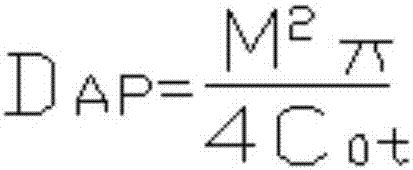Tempering process of touchable glass
A tempering and touch technology, applied in glass tempering, glass manufacturing equipment, manufacturing tools, etc., can solve the problems of slow tempering time, low safety of tempered glass, and large fluctuation range.
- Summary
- Abstract
- Description
- Claims
- Application Information
AI Technical Summary
Problems solved by technology
Method used
Image
Examples
Embodiment 1
[0052] Example 1: Completely clean and wipe the interior of the tempering furnace and charging furnace, pour the powdered potassium nitrate into the tempering furnace, and cover more than half of the tempering furnace with potassium nitrate;
[0053] After adding potassium nitrate, raise the furnace temperature to 400°C to make it completely melted, then control the temperature at 400°C, and let stand at constant temperature for 35 hours;
[0054] The weight ratio of each component of the catalyst is: K 2 O: 6 parts, ZrO 2 : 6 parts, Al 2 o 3 : 20 copies, K 2 CO 3 : 50 parts, Na 2 CO 3 :8 parts, KMnO 4 : 10 servings. The catalyst is mixed according to the mass ratio of raw materials and broken into a powdery mixture;
[0055] After the constant temperature finishes, add the catalyst by 5% of the weight of potassium nitrate added;
[0056] The weight ratio of each component of the safety enhancer is: Cs 2 o 2 : 2 parts, alkyl alcohol ether carboxylate (AEC): 25 part...
Embodiment 2
[0064] Example 2: Completely clean and wipe the inside of the tempering furnace, feeding furnace, etc., pour the powdered potassium nitrate into the tempering furnace, and cover more than half of the tempering furnace with potassium nitrate;
[0065] After adding potassium nitrate, raise the furnace temperature to 440°C to make it completely melted, then control the temperature at 400°C, and let stand at constant temperature for 30 hours;
[0066] The weight ratio of each component of the catalyst is: K 2 O: 8 parts, ZrO 2 : 8 servings, Al 2 o 3 : 24 parts, K 2 CO 3 : 50 parts, Na 2 CO 3 :5 parts, KMnO 4 : 5 servings. Catalysts are mixed according to their respective mass ratios of raw materials and crushed into powdery mixtures;
[0067] After the constant temperature finishes, add the catalyst by 10% of the weight of potassium nitrate added;
[0068] The weight ratio of each component of the safety enhancer is: Cs 2 o 2 : 2 parts, alkyl alcohol ether carboxylate ...
Embodiment 3
[0076] Example 3: Completely clean and wipe the inside of the tempering furnace, feeding furnace, etc., pour the powdered potassium nitrate into the tempering furnace, and cover more than half of the tempering furnace with potassium nitrate;
[0077] After adding the potassium nitrate, raise the temperature of the furnace to 400°C to completely melt the potassium nitrate, then control the temperature at 400°C and let it stand at a constant temperature for 38 hours;
[0078] The weight ratio of each component of the catalyst is: K 2 O: 8 parts, ZrO 2 : 10 parts, Al 2 o 3 : 30 parts, K 2 CO 3 : 40 parts, Na 2 CO 3 :4 parts, KMnO 4 : 8 servings. Catalysts are mixed according to their respective mass ratios of raw materials and crushed into powdery mixtures;
[0079] After the constant temperature finishes, add the catalyst by 5% of the weight of potassium nitrate added;
[0080] The weight ratio of each component of the safety enhancer is: Cs 2 o 2 : 1 part, alkyl alc...
PUM
 Login to View More
Login to View More Abstract
Description
Claims
Application Information
 Login to View More
Login to View More - R&D
- Intellectual Property
- Life Sciences
- Materials
- Tech Scout
- Unparalleled Data Quality
- Higher Quality Content
- 60% Fewer Hallucinations
Browse by: Latest US Patents, China's latest patents, Technical Efficacy Thesaurus, Application Domain, Technology Topic, Popular Technical Reports.
© 2025 PatSnap. All rights reserved.Legal|Privacy policy|Modern Slavery Act Transparency Statement|Sitemap|About US| Contact US: help@patsnap.com

